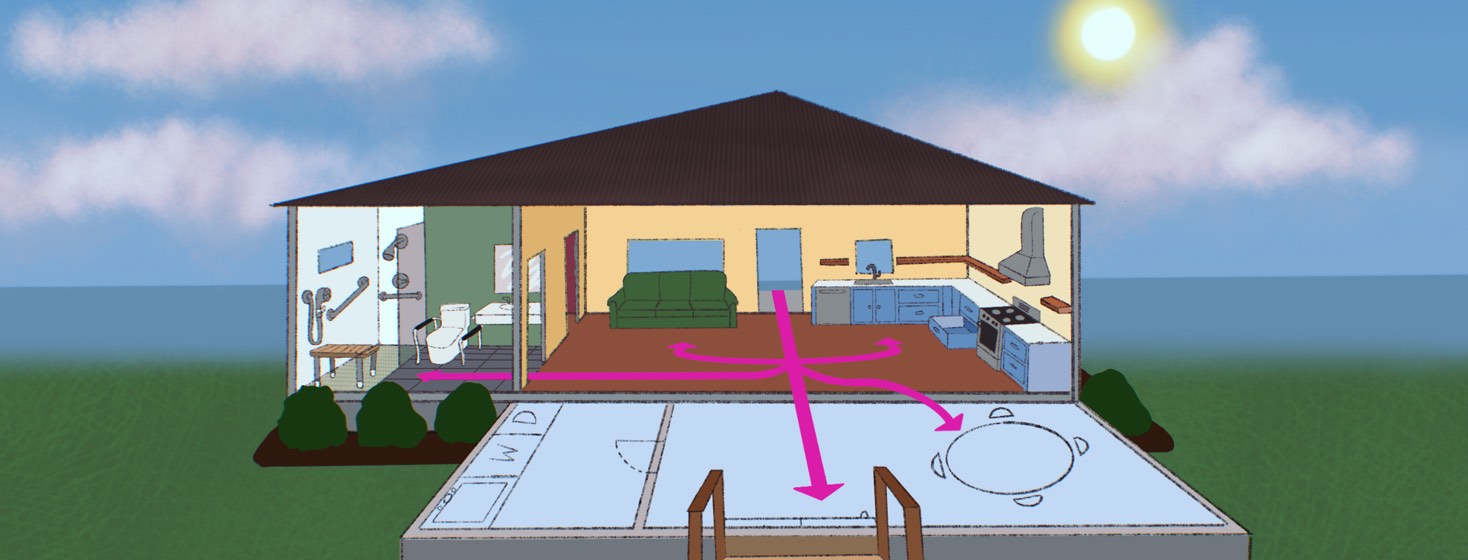Tips for Minimizing Your Fall Risk
Fall risks are all around. But when your mobility is impaired, fall risks are amplified. As such, so should be your awareness of these risks.
A few facts
To help increase your awareness and encourage you to minimize your risks, here are some alarming facts about falls from the Center for Diseases Control and Prevention (CDC):1
- The rate of death from falls increased 31 percent from 2007 to 2016 among US residents aged 65 and older.
- 1 out of 5 falls causes a serious injury such as a broken bone or head injury
- Falls are the most common cause of traumatic brain injuries (TBI)
After a person sustains a fall, even if not injured, they are more likely to develop a fear of falling, which causes them to be less active.
However, a more sedentary lifestyle actually increases their risk even more for falling and obtaining an injury or even leading to death. Fear management should certainly be addressed when assessing fall risk.
What increases the risk of falling?
What exactly would constitute someone as having impaired mobility and be at an increased risk of falling?
This can include certain medical diagnoses such as Parkinson’s disease, multiple sclerosis, arthritis, and diabetes, which can cause an impaired sensation of the feet and vision problems.
Even consider impairing side effects from diagnoses such as cancer affecting overall strength, walking, and endurance.
No matter the diagnosis, impaired mobility can encompass many things. This includes:
- Impaired gait pattern and slower gait speed
- Use of an assistive device
decreased strength - Impaired balance
- Impaired activity tolerance or endurance
- Impaired sensations
- Impaired vision
- Pain
- Limited flexibility
Even having bladder/bowel incontinence issues can put you at an increased risk of falling due to feeling like you have to hastily rush to the bathroom at times.
Be proactive
If you deal with any of these, you may wish to speak with your doctor about ways to directly manage them. Consider even seeing a physical therapist to address them through specific interventions to improve your overall mobility and decrease your fall risk.
Being proactive about managing what you are able should be your first approach.
Accessibility in public spaces
Environmental factors play a large role in falls as well.
Public places should be up to code using accessibility standards set by the Americans with Disabilities Act (ADA). This allows access for all mobility levels which, in turn, helps with decreasing fall risks.2 We know that, unfortunately, this not always the case. I highly encourage you to advocate for ADA accessibility standards in all public places.
But, let’s also not overlook the accessibility and safety of where you most likely spend the majority of your time: your home.
Minimize fall risks in your own home
There are several factors you can address within your home to minimize or prevent falling. These include:
- Removing or securing all rugs
- Taking extra caution with pets
- Repairing poor flooring
- Improving poor lighting
- Clearing clutter
- Installing handrails on stairs
- Using assistive devices or other durable medical equipment properly
- Ensuring no cords or wires are impeding pathways
- Installing grab bars in the bathroom around the commode and shower/bathtub
In addition, if you live alone, consider getting a LifeAlert button to wear around your neck or keep a phone in your pocket at all times. Keep items often used within easy reach and always wear properly fitting shoes with a rubber sole.

Join the conversation